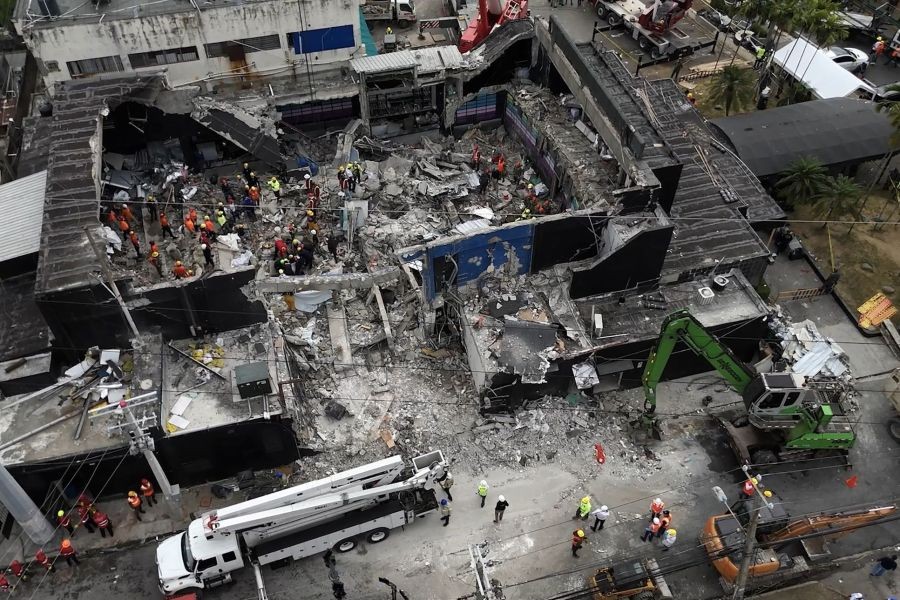In the realm of real estate and construction, maintaining structural integrity is paramount. A tragic incident in a Dominican nightclub where a roof collapse resulted in 44 deaths and dozens of injuries serves as a stark reminder of the importance of safety standards. Though this event occurred far from New Zealand, it raises pertinent questions about construction practices and regulations globally, including in our own backyard. Could such a disaster happen here? What lessons can New Zealand's real estate industry learn from this tragedy to prevent future occurrences?
Understanding the Incident
The Dominican nightclub tragedy highlights several critical factors that may have contributed to the structural failure. Initial investigations suggest poor construction materials, lack of adequate maintenance, and possible design flaws. These factors are not unique to the Dominican Republic, as similar risks exist in any construction project worldwide, including New Zealand. This incident underscores the importance of stringent building codes and regular inspections to ensure public safety.
The New Zealand Context: Safety and Regulations
New Zealand has a robust framework for building and safety regulations, yet there is always room for improvement. The Building Act 2004 requires that all buildings, including those under construction, comply with the Building Code, which sets out performance standards. However, real-world application can sometimes fall short. This situation prompts an examination of whether current regulations sufficiently prevent the risk of such catastrophic failures.
Case Study: Christchurch Rebuild
Following the devastating earthquakes in Christchurch in 2010 and 2011, New Zealand faced the monumental task of rebuilding. This effort saw the implementation of stricter building standards to ensure resilience against future seismic events. A notable example is the redesign of the Christchurch Town Hall, employing advanced engineering techniques to enhance structural integrity. These measures have proven effective, as recent minor earthquakes have caused little to no damage to newly constructed buildings.
Pros and Cons of Current Building Practices
Pros
- Advanced Building Codes: New Zealand's building codes are among the most stringent, ensuring structures can withstand seismic activities.
- Innovative Design: Use of cutting-edge technology and materials has improved the durability and sustainability of buildings.
- Safety Prioritization: Regular inspections and adherence to safety standards have minimized risks of structural failures.
Cons
- Compliance Costs: Adhering to strict building regulations can increase construction costs, impacting affordability.
- Complexity of Regulations: Navigating through comprehensive regulations can be challenging for developers and builders.
- Inconsistent Enforcement: Variability in enforcement of building codes can lead to non-compliance in some areas.
How It Works: Ensuring Structural Integrity in Construction
Ensuring structural integrity involves meticulous planning, adherence to regulations, and regular maintenance. Key steps include:
- Design and Planning: Engage qualified architects and engineers to design buildings that meet or exceed safety standards.
- Quality Materials: Use high-quality, certified materials to ensure longevity and safety.
- Regular Inspections: Conduct frequent inspections during and after construction to identify and rectify potential issues.
- Continuous Maintenance: Implement a routine maintenance schedule to address wear and tear, especially in older buildings.
Common Myths & Mistakes
Myth vs. Reality
- Myth: "Building codes are overly cautious and unnecessary." Reality: Strict building codes are vital for ensuring safety and preventing disasters. The Christchurch rebuild demonstrates the effectiveness of these measures.
- Myth: "Once a building is constructed, it requires no further attention." Reality: Regular maintenance is crucial to address any emerging issues and prolong the lifespan of a building.
Mistakes to Avoid
- Overlooking Maintenance: Neglecting routine checks can lead to undetected structural weaknesses.
- Cutting Costs on Materials: Opting for cheaper materials can compromise structural integrity.
- Ignoring Regulation Updates: Failing to stay updated with the latest regulations can lead to non-compliance and heightened risk.
Future Trends & Predictions
In the next decade, New Zealand's real estate industry is poised to embrace even more advanced technologies to enhance building safety. The trend towards smart buildings equipped with sensors to monitor structural health in real-time is expected to gain momentum. According to a report by MBIE, investment in such technologies could reduce maintenance costs by up to 30% by 2030.
Conclusion
The tragic roof collapse in the Dominican Republic is a stark reminder of the importance of maintaining high standards in construction practices. For New Zealand, the event underscores the necessity of robust building regulations, regular maintenance, and continuous improvement in construction methodologies. As we move forward, embracing new technologies and adhering to stringent safety standards will be crucial in preventing similar disasters.
What steps do you think New Zealand can take to further enhance building safety? Share your thoughts in the comments below!
People Also Ask
- How does building safety impact New Zealand's real estate market?
Building safety significantly impacts New Zealand's real estate market by influencing property values and buyer confidence. Adhering to safety standards ensures long-term investment stability.
- What are the biggest misconceptions about construction safety?
A common misconception is that building codes are overly cautious. In reality, they are essential for ensuring safety and preventing disasters, as demonstrated by the Christchurch rebuild.
- What upcoming changes in New Zealand could affect building regulations?
By 2026, policy updates in the construction industry may introduce stricter safety standards, aligning with global best practices to enhance building resilience.
Related Search Queries
- New Zealand building regulations 2023
- Construction safety standards NZ
- Real estate market trends New Zealand
- Building maintenance best practices
- Smart building technology in NZ
- Christchurch earthquake rebuild
- Roof collapse prevention strategies
- MBIE construction reports
- Sustainable construction practices NZ
- Future of real estate in New Zealand






























